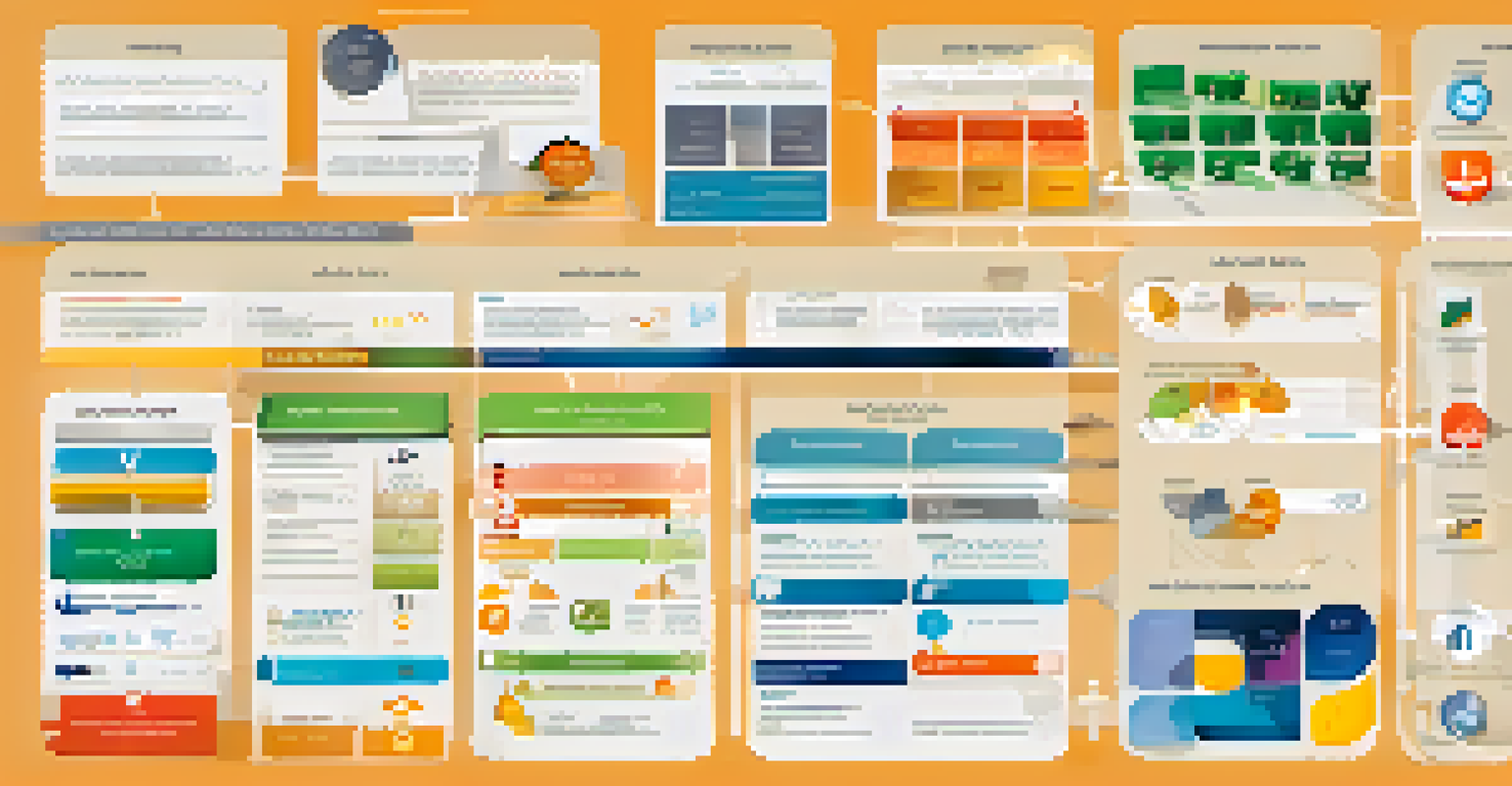How Business Partnerships Are Taxed: Key Concepts and Terms

What Is a Business Partnership and Its Tax Framework?
A business partnership is a collaborative arrangement where two or more individuals share ownership and operational responsibilities. In this setup, partners contribute resources, skills, or capital, all aiming for a common goal. Understanding how these partnerships are taxed is crucial, as it affects the overall profitability and financial health of the business.
In business partnerships, trust and communication are as important as the financial aspects.
Unlike sole proprietorships or corporations, partnerships are generally not taxed at the entity level. Instead, the income, deductions, and credits pass through to the individual partners based on their percentage of ownership. This pass-through taxation model can be advantageous, as it avoids the double taxation often seen in corporations.
However, this does mean that partners must report their share of the partnership income on their personal tax returns. It’s essential for partners to keep detailed financial records to ensure accurate reporting and compliance with tax regulations.
Key Terms to Know in Partnership Taxation
When navigating partnership taxation, it's helpful to familiarize yourself with some key terms. First, 'pass-through entity' refers to a business structure that allows income to be taxed at the individual level rather than the business level. This is a hallmark of partnerships and can significantly influence tax liabilities.

Another vital term is 'K-1 form,' which partners receive annually. This form details each partner's share of the partnership's income, deductions, and credits. Understanding K-1 forms is crucial, as they directly impact how partners report their income on their taxes.
Partnerships Avoid Double Taxation
Unlike corporations, partnerships benefit from pass-through taxation, allowing income to be taxed only at the individual partner level.
Lastly, 'capital contributions' refer to the assets or cash that partners invest in the business. These contributions can affect a partner’s basis in the partnership, which is essential for determining gain or loss when they sell their interest in the partnership.
Types of Partnerships and Their Tax Implications
There are several types of partnerships, each with its own tax implications. The most common are general partnerships, where all partners share equal responsibility and liability, and limited partnerships, which have both general and limited partners, with the latter having restricted control and liability.
The beauty of a partnership is that we can achieve more together than we can alone.
In a general partnership, all partners are equally responsible for paying taxes on the partnership’s income, which can lead to higher personal tax liabilities for partners who earn more. On the other hand, limited partners typically only report income to the extent of their investment, making their tax exposure potentially lower.
Moreover, partnerships can also be structured as limited liability partnerships (LLPs), which offer personal liability protection to all partners. This structure can have specific tax advantages, especially for professional services firms, allowing them to benefit from pass-through taxation while limiting personal risk.
Tax Deductions Available for Partnerships
Partnerships can take advantage of various tax deductions that can lower their overall taxable income. Common deductions include business expenses such as rent, salaries, and utilities. By accurately tracking and reporting these costs, partners can reduce their taxable income significantly.
Another important deduction is for health insurance premiums. If the partnership pays for a partner’s health insurance, that amount can often be deducted from the partnership's income. This not only reduces the overall tax obligation but also provides benefits to the partners.
Key Tax Forms for Partners
Partners receive a K-1 form annually, detailing their share of the partnership's income, deductions, and credits for accurate tax reporting.
Additionally, depreciation on assets used for business purposes can further reduce taxable income. This allows partnerships to recover costs on long-term assets, such as equipment and property, over time, aligning the tax burden with the actual use and wear of the asset.
Self-Employment Taxes and Partnerships
Partners in a business partnership are generally considered self-employed, which means they are responsible for paying self-employment taxes on their share of the partnership income. This tax covers Social Security and Medicare contributions, which are typically withheld from employees’ paychecks.
It's crucial for partners to be aware that their self-employment tax obligations can be significant, especially if the partnership generates substantial income. Partners can calculate their self-employment tax using IRS Form SE, which helps ensure compliance with federal tax regulations.
However, one silver lining is that partners can also deduct half of their self-employment tax when calculating their adjusted gross income. This deduction effectively reduces the overall taxable income, providing some relief to self-employed individuals.
Filing Tax Returns for Partnerships
Partnerships are required to file an annual information return using IRS Form 1065. This form reports the partnership's income, deductions, and other financial information. It's important to note that this is not a tax return but rather a means to inform the IRS about the partnership's financial activities.
Each partner receives a Schedule K-1, which details their share of the partnership’s income, deductions, and credits. Partners use this information to report their income on their personal tax returns, ensuring that they accurately reflect their share of the partnership’s financial performance.
Self-Employment Tax Responsibilities
Partners are considered self-employed and must pay self-employment taxes on their share of income, but they can deduct half of this tax when calculating adjusted gross income.
Filing these forms correctly and on time is crucial, as mistakes can lead to penalties and interest charges. Many partnerships choose to work with tax professionals to navigate these complexities and ensure compliance with tax laws.
Partnerships and Changes in Ownership: Tax Considerations
Changes in partnership ownership, whether through additions or exits, can have significant tax implications. When a new partner joins, they may need to contribute capital to the partnership, which can affect the partnership’s overall tax structure and the existing partners’ basis.
Similarly, when a partner exits, they may realize a gain or loss based on their share of the partnership's assets. This can trigger tax consequences for both the exiting partner and the partnership itself, necessitating careful financial planning.

Understanding how ownership changes impact tax liabilities can help partners make informed decisions about future investments and exits. Consulting with a tax advisor during these transitions can provide invaluable insight into how to navigate this complex landscape.